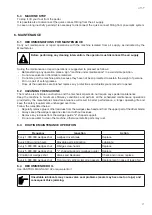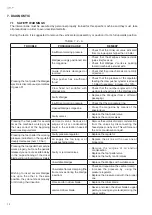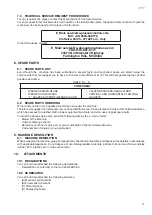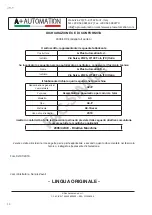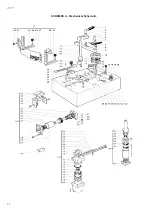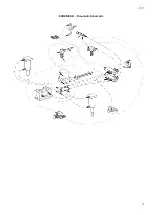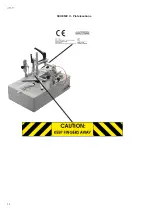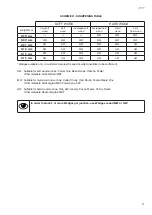
13
A3-P
4.8.2a Vertical clamp position adjustment
• Position the mouldings to be assembled on the working bench
• Select the pressure pad suitable with the profile of the moulding
to be assembled and put it on bottom part of the the vertical bar
• Loosen the handle (see fig.15) that locks the clamp,which
holds the vertical bar. This will permit its movement forward or
backward. You want the pressure pad directly over the lath in the
same position over the Wedge insertion point.
• Tighten the handle once you have reached the proper position
Picture 15
4.8.2b Vertical clamp height adjustment
• Press the lever (see fig. 16) and adjust the pressure pad height
over the frame. It suggested that you put the bar height between
5 & 8 mm over the moulding. This will help avoid any accidental
fingers crushing.
• Release the lever once once you have reached the proper height.
• Lower the vertical clamp by pressing half way down on the foot
pedal. This will verify that the mouldings to be assembled are
properly clamped
• Press all the way down on the foot pedal to drive the wedge into
the laths.
Picture 16
4.8.3 Horizontal clamp adjustment
The horizontal clamp has a series of holes in the flat bar (see fig.17).
Lift the bar, to take it out of its initial position. You will now be able to move it forward and backward. To lock the
bar it is sufficient to insert it into the proper peg located in the middle of the guide channel.
Proceed as follows to position the frontal Clamp correctly:
1. Remove the bar off of the peg by lifting it by about 10-15 mm (Picture 17). Move it forward until it touches the
moulding to be assembled (see Picture 18);
2. Lower the bar into the next available hole and over the peg.
Picture 17
Picture 18
In case of continued use without needing to remove the frontal clamp from its position, it is
possible to fix it into the peg using the proper screw.
4.8.4 Working pressure adjustment
The working pressure must be adjusted to the hardness of the mouldings to be assembled. The pressure regulation
allows you to change the clamping pressure of mouldings to be assembled. Too high of a working pressure can
cause a poor junction and (especially on small-size frames) the moulding could be crushed. Too low of a working
Summary of Contents for A3-P
Page 3: ...3 A3 P...
Page 22: ...22 A3 P SCHEMES A Mechanical Schematic...
Page 23: ...23 A3 P SCHEMES B Pneumatic Schematic...
Page 24: ...24 A3 P SCHEME C Plate locations...
Page 26: ...26 A3 P...
Page 27: ...27 A3 P...

















